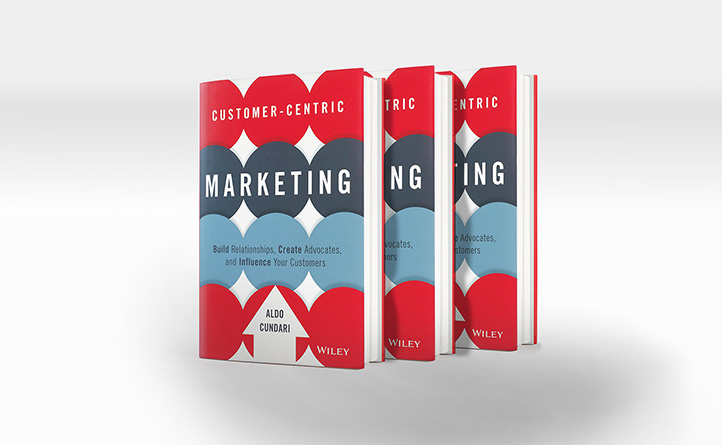
Why Brands Are More Important Than Ever
October 15, 2015
Author: Aldo Cundari
Publication: Marketing Magazine
Originally published on August 31, 2015
With 35 years’ experience running one of Canada’s most successful and respected independent advertising agencies, Aldo Cundari has seen a lot, learned even more and accumulated an impressive reservoir of industry understanding and wisdom. He’s applied that insight and knowledge to a new book from Wiley titled, Customer-Centric Marketing: Build Relationships, Create Advocates, and Influence Your Customers.
The book offers actionable advice for marketers trying to make sense of the consumer-brand dynamics radically reinvented in the digital age. Marketing will share a series of excerpts from Customer-Centric Marketing over the next week.
Last week, Cundari shared an example from BMW to illustrate how good content becomes even more powerful in the hands of brand advocates. This week he draws on the research work of former P&G marketer and author of Grow Jim Stengel to explain how brands are more important than ever in building connections with consumers.
For decades, marketers have built their brands on a fairly predictable playing field with a consistent set of rules. Until recently, it could be characterized as a somewhat one-sided affair, where marketers pushed their message out to the assembled customer masses.
Before the Digital Age, traditional advertising and its mass delivery systems provided efficient, predictable, and safe channels for the delivery of brand messaging to customers.
As we’ve seen and discussed in previous chapters, customers now have a formidable decision-making role in a brand‘s future longevity. Empowered with technology and social media, customers are redefining how the game is played.
As Amazon’s Jeff Bezos says, a brand is: “The things that people say about you when you’re out of the room.”
Today, customers are saying a lot, and not just to their immediate social circle. They are talking to anybody and everybody online. And when they’re not talking, they’re listening to whoever else is talking to inform their brand perceptions. This role reversal has given customers a significant influence on the health and reputation of any brand.
DOES A BRAND ADD VALUE
One could ask: “Are brands still relevant and valuable in today’s marketplace?” My answer is a resounding “yes!”—brands are probably even more important than ever before, for in the sea of distraction surrounding today’s customers, a brand can be “the beacon of light”—the one place with the ability to connect your product/service story and organizational values to customers as well as employees.
Strong brands add real, tangible value to any business. Jim Stengel, in his bookGrow, puts some real meat on the bones of brand valuation. Here’s one of his great illustrative points: In 1980, the entire market capitalization of the Standard & Poor’s 500 consisted of tangible assets such as cash, offices, plants, equipment, and so on.In 2010, tangible assets accounted for only 40% to 45% of these same companies’ market cap; the rest were intangible assets, and about half of those assets, more than 30% of total capitalization, was attributed to the brand.
Stengel also conducted a proprietary 10-year growth study of more than 50,000 brands around the world, with revealing results. Companies that reflected the principles of his “Grow” model, which uses “Brand Ideals” as its core business driver, achieved growth that was three or more times greater than their competitors’. He then took the top 50 companies in the study and created the Stengel 50. His findings showed that these 50 companies had generated an ROI that was 400% better than the Standard & Poor’s 500. That is definitely not too shabby.
Stengel identifies the “Brand Ideal” as the key factor in building successful brands. The Brand Ideal is based on using one (or possibly two) of five human values from the following list—all of which focus on improving people’s lives—as a guiding light for everything from operating structure to customer service to hiring. The companies that made up the Stengel 50 all had at least one of these human values:
- Eliciting joy: Activating experiences of happiness, wonder, and limitless possibility. Stengel cited Coca-Cola, Zappos, and Moët & Chandon as examples.
- Enabling connection: Enhancing the ability for people to connect with one another and the world in meaningful ways, such as Starbucks, FedEx, and Natura.
- Inspiring exploration: Helping people explore new horizons and new experiences, such as Amazon.com, Apple, and Red Bull.
- Evoking pride: Giving people increased confidence, strength, security, and vitality, such as Hermès, Hugo Boss, and Mercedes-Benz.
- Impacting society: Affecting society broadly, including challenging the status quo and redefining categories, such as Dove, IBM, and Royal Canin.
ROI results of 400% over the S&P 500 is not only impressive but also speaks to a new lens that customers are using to choose a brand. Today’s customers seek brands whose values are in sync with their own, and if the match isn’t there, there are many other options they can choose from.